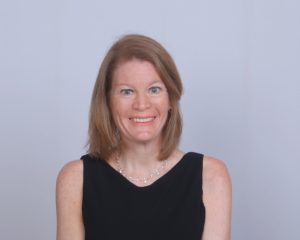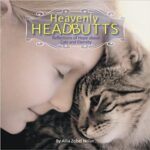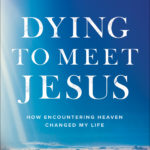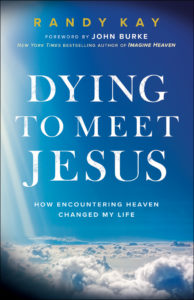 WITH THE DEATH of my husband just three months ago, Heaven has been very much on my mind. It’s a surreal feeling to know my husband is still alive but in a heavenly realm where I can’t communicate with him. I long to know what he is doing and what his new life is like. So the interview I did here with author Randy Kay is especially meaningful for me. Randy almost died a few years back and had a near death experience in which he actually experienced heaven for about 30 minutes. His book, Dying to Meet Jesus, tells about his near-death-experience after dying and meeting Jesus in heaven. In my interview with him here he’s going to share some things from that experience. As CEO of PACEsetters and chairman of TenorCorp, Randy Kay has an impressive business background and has written for Forbes and the Wall Street Journal.
WITH THE DEATH of my husband just three months ago, Heaven has been very much on my mind. It’s a surreal feeling to know my husband is still alive but in a heavenly realm where I can’t communicate with him. I long to know what he is doing and what his new life is like. So the interview I did here with author Randy Kay is especially meaningful for me. Randy almost died a few years back and had a near death experience in which he actually experienced heaven for about 30 minutes. His book, Dying to Meet Jesus, tells about his near-death-experience after dying and meeting Jesus in heaven. In my interview with him here he’s going to share some things from that experience. As CEO of PACEsetters and chairman of TenorCorp, Randy Kay has an impressive business background and has written for Forbes and the Wall Street Journal.
As we celebrate Easter and the new life Jesus brings to us through His death and resurrection, Randy’s story gives us a riveting glimpse into the heaven our God has prepared for us.
Linda: Randy, before sharing your story with us, please tell us a little bit about your background. I understand you have more than 30 years of experience working in business and are the founder of PACEsetters. Tell us more about that and how you became a Christian.
Randy: I was a devout agnostic in my youth and challenged all religions through a comprehensive study at Northwestern University that I detail in my book.
Our researchers debunked all religions except Christianity. Most religions were created by a single individual or a fusion of beliefs. However, we discovered that the biblical account of God being true was validated with a probability ratio of 1.26 million to one! After that I cried out to an unknown God: “If you’re real, I need to know you as genuinely as I know my loved ones on earth.”
After surviving a near-fatal car crash, I began my sincere search to learn about the God of the Bible. I attended a church near Chicago and responded to an invitation for attendees who wished to receive Jesus Christ as their Lord and Savior. I prayed, and later that night I indeed met Jesus Christ in my spirit. Still, I remained a bit of a skeptic. I certainly did not believe in near-death-experiences (NDEs). That is, until I had my own.
Linda: I watched a TV interview with you and saw that you experienced a miraculous face-to-face encounter with Jesus in your near death experience, meeting Him at the point of death. What were your first thoughts when seeing Jesus in heaven during that near death experience?
Randy: Yes, I clinically died from multiple blood clots and a drug-resistant infection throughout my body. My heart stopped beating.
I remember that first time meeting Jesus as vividly as if I were there right now. My “cheek to cheek” meeting with Jesus brings me to tears whenever I think back on it. My first thought in heaven was: “So this is Love.” Jesus hugged me, tightly. He did not have to say that He loved me, because His presence permeated every fiber of my being. I remember a sense of “knowing” – knowing that Jesus was my all, and that nothing could happen to me without Jesus being with me. Perfect peace and comfort possessed me. “I am with you always,” He said. I just caved into His chest. I felt at home like never in this world.
Linda: Can you describe what else you experienced during your time with Jesus?
Randy: In heaven, Jesus fulfilled all of my needs, so I did not long for anything and I certainly had no worldly cares. Being with Jesus was sufficient for me. This is a difficult thing to describe, because that sense is like nothing on this earth. It was total completeness, absolute contentment. Another sense I experienced was that I had all of Jesus’ attention. I knew that He held the cares of the world, but I felt as though I was an audience of one.
As to heaven itself, the colors were more vibrant, the fragrances more aromatic, the landscape more beautiful than anything in this world. Everything was alive. The glory of God rested through the environs, and everyone and everything worshipped the Lord.
I remember the angelic chorus, rows of linens, the joy on the faces of everyone in paradise…there really are no adequate words to describe heaven. It was like walking into another dimension, as though I was viewing a beautifully painted landscape and then suddenly I had stepped into a living version of that landscape.
Linda: You present a very comforting picture–particularly for me in this time of my own grieving. Since your near death experience, have you struggled at all to share this story? How have people reacted to the story of your near death experience?
Randy: It took me 14 years before I could share my near death experience publicly. Before then, only a handful of people knew about it. There was no need to share it with others who might trivialize the most important meeting in my life. That is, until I was interviewed on GodTV about a business book I had written, and the interviewer (who was my former pastor), asked me about my near death experience. I cried while sharing my story for the first time publicly.
On the flight back, the Holy Spirit prompted me to write another book. However, this time the Holy Spirit prompted me to write about “our special time together.” At first, sharing this experience was hard. I felt like I was defiling something sacred, but then God’s peace and inspiration filled me, and the writing just flowed out. That is how I wrote Dying to Meet Jesus.
I now pray that readers will know God more intimately after reading this book. Also, I wanted to address the question as to why a loving God allows suffering. I hope that readers will better understand why God allows brokenness and suffering to happen, since I share several stories of brokenness involving others as well as my own sufferings. I share the suffering of my daughter’s struggles with drugs, illness, rape and attempted suicide for the first time. I also share my own struggles with depression. Several others in my life allowed me to share their stories of brokenness also.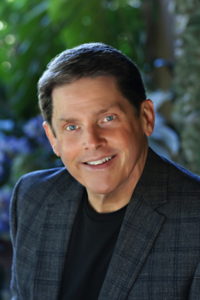
Linda: What trials did you face after your near death experience? Did you expect to face more trials, or did you believe that the worst was behind you?
Randy: I never doubted God’s Love after my near death experience, but I did struggle. In fact, some of my greatest sufferings occurred after meeting Jesus. I lost my job, my financial security, and almost lost my family. At times I wondered why God did not just take me when He “had the chance.” However, in heaven, Jesus told me that He was returning me to this world because my purpose had yet to be fulfilled. Since then, I began teaching people how to thrive in life and how to overcome struggles.
Previously, I was a corporate executive. I lost almost all of my savings trying to fulfill the purpose with which God commissioned me, but I never doubted God’s hand in my life. When challenges arise, my Lord tells me to “trust” Him, and that He will always make my path straight. I am continually reminded that God is still with me.
Linda: Did your near death experience change your outlook on life?
Randy: I know Love as a person and as a guiding presence, and that has made all the difference in my life. I can handle challenges better because of this deeply embedded awareness of Jesus as my friend. He is more real to me than most people I know! I can speak to others about God with more confidence and understanding. And, this has given me an insight into Jesus’ absolute devotion to His children that has transcended into every area of life, both the good and the bad.
Linda: In your book, Dying to Meet Jesus, you say, “Friends, be careful what you pray for.” Could you tell us why you say this?
Randy: God answers prayer, but He will do it in a way that is best, even if the way to attain what we need is fraught with challenges. God desires our best, whereas we oftentimes desire what is convenient, or what appears good. This world sullies us with its temptations and false teachings. God refines us through a process of redemption. As a father, I know that the most painful process of parenting is allowing my children to go through challenges for their own good. God may allow suffering for a reason, but He will never leave us there. God collects our tears in a bottle (Psalm 56:8), and from those tears He produces a river of abundant life. That is what I saw in heaven.
Linda: For those of us who have lost a loved one, what can you tell us about what they might be experiencing now?
Randy: For the believer in Jesus Christ, there is no real death. I never experienced a sense of having died. I only experienced a transition to another place.
Leaving this world is like leaving your workplace, and then suddenly finding yourself on a glorious vacation with the One who loves you most. For anyone who has lost a loved one in Christ, know that he/she feels more alive today, as difficult as that may seem. There remains an empty place for those of us who are left behind, but I can assure you that we can look forward to an eternity in heaven with no remembrance of our losses or sufferings.
Grieving for a lost loved one is normal, but only because we will never again see our loved one in this world again. For believers in Jesus Christ, think of dying as similar to saying goodbye at the airport knowing you will not see your loved one for a while, but also knowing that someday, you will meet again. Celebrate that your born-again loved one is experiencing the best time of his or her life. And soon, like a blink of the eye from an eternal perspective, you will meet again in paradise. That will be a “wowsa moment!”
Linda: You have an amazing story, and I know people will be interested in reading more. Where can readers go to connect with you and buy a copy of Dying to Meet Jesus?
Randy: You can find the book at Amazon , Barnes & Noble , Christianbook.com, or your local book store.
Watch Randy Kay’s Interview on the Cornerstone Television Network
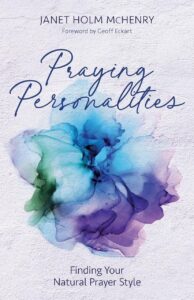 IS THERE A “right’ way to pray? Many of us have heard various prescriptions about how to make our prayer life more meaningful and effective. But when we try it out, it may seem complicated, awkward, or unnatural. Certain prayer approaches seem to work well for some people but not for others. But maybe, just maybe, that’s to be expected. In author Janet Holm McHenry’s new book,
IS THERE A “right’ way to pray? Many of us have heard various prescriptions about how to make our prayer life more meaningful and effective. But when we try it out, it may seem complicated, awkward, or unnatural. Certain prayer approaches seem to work well for some people but not for others. But maybe, just maybe, that’s to be expected. In author Janet Holm McHenry’s new book, 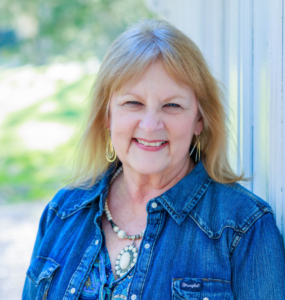 perspective and attitude.
perspective and attitude.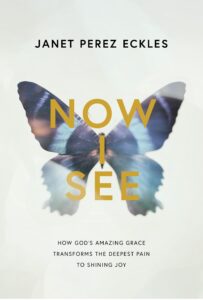 SOME PEOPLE ARE AN INSPIRATION. Not only have they overcome overwhelming challenges in their life, but their face radiates love and joy. Whenever you meet them, the warmth of their graciousness creates a sweet and welcoming encounter. This is Janet Perez Eckles, author of her new book,
SOME PEOPLE ARE AN INSPIRATION. Not only have they overcome overwhelming challenges in their life, but their face radiates love and joy. Whenever you meet them, the warmth of their graciousness creates a sweet and welcoming encounter. This is Janet Perez Eckles, author of her new book, 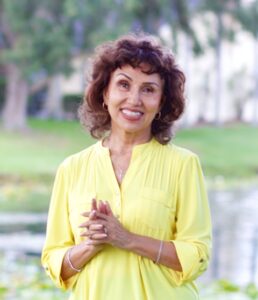
 BECAUSE THE PAIN and insecurities we experience in life often affect us in ways beyond our immediate understanding, many of us develop a fear of rejection that can hold us captive and keep us from enjoying meaningful relationships. In her book,
BECAUSE THE PAIN and insecurities we experience in life often affect us in ways beyond our immediate understanding, many of us develop a fear of rejection that can hold us captive and keep us from enjoying meaningful relationships. In her book,  build to protect ourselves from possible rejection. For the first time, I realized that I purposely refrained from sharing much about myself, or my thoughts and ideas, because I feared people wouldn’t like me.
build to protect ourselves from possible rejection. For the first time, I realized that I purposely refrained from sharing much about myself, or my thoughts and ideas, because I feared people wouldn’t like me.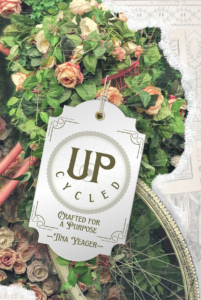 WHEN WE FEEL lonely and disconnected, it can be hard to find connection again. Author and mental health counselor, Tina Yeager offers us a creative answer to find our way back into community. In her new book,
WHEN WE FEEL lonely and disconnected, it can be hard to find connection again. Author and mental health counselor, Tina Yeager offers us a creative answer to find our way back into community. In her new book, 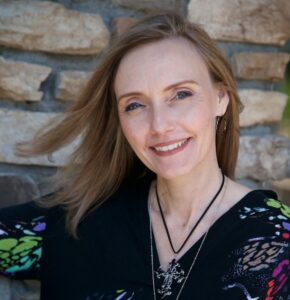 cited one critical exception. “It is not good for the man to be alone” (Genesis 2:18, NIV). Elohim, a relational and triune God, created us for relationship. He did not design us to exist in emotional, spiritual, or physical isolation.
cited one critical exception. “It is not good for the man to be alone” (Genesis 2:18, NIV). Elohim, a relational and triune God, created us for relationship. He did not design us to exist in emotional, spiritual, or physical isolation. AS THE NEW YEAR gets underway, we may or may not be looking forward to what lies ahead. But regardless of our situation, there is one thing we can be certain of. If we are trusting God to lead us, we need not fear the future. One tool that can be helpful as we seek God’s wisdom in the Word is having a devotional book to guide us through the Bible. Author Donna Schlachter hopes her devotional book,
AS THE NEW YEAR gets underway, we may or may not be looking forward to what lies ahead. But regardless of our situation, there is one thing we can be certain of. If we are trusting God to lead us, we need not fear the future. One tool that can be helpful as we seek God’s wisdom in the Word is having a devotional book to guide us through the Bible. Author Donna Schlachter hopes her devotional book, 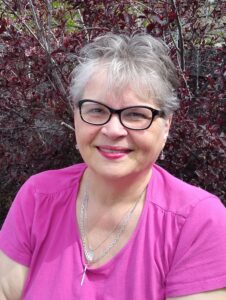
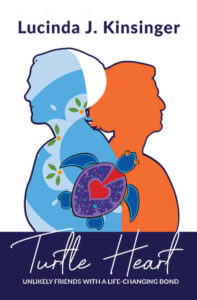 Turtle Heart – Author Interview with Lucinda J. Kinsinger
Turtle Heart – Author Interview with Lucinda J. Kinsinger
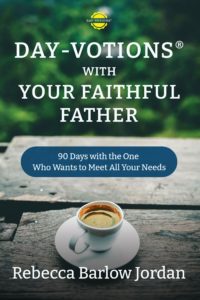 Day-votions® with Your Faithful Father: 90 Days with the One Who Wants to Meet All Your Needs
Day-votions® with Your Faithful Father: 90 Days with the One Who Wants to Meet All Your Needs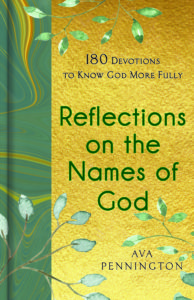 3 individual perspectives: who God is, how this name or attribute changes us, and how it changes our relationships. Every name God calls himself and every name his people called him holds clues to who he is, how he relates to his children, and the promises he has made–and kept.
3 individual perspectives: who God is, how this name or attribute changes us, and how it changes our relationships. Every name God calls himself and every name his people called him holds clues to who he is, how he relates to his children, and the promises he has made–and kept.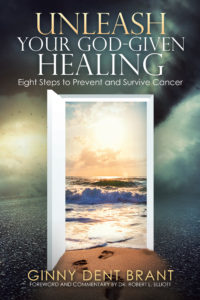 For someone on your list who is health conscious right now, you might want to consider
For someone on your list who is health conscious right now, you might want to consider 
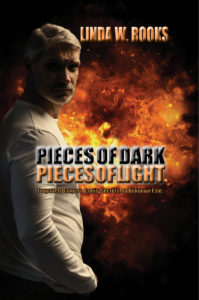 To add a little excitement for those long, cold winter nights, one of your friends might enjoy my new suspense thriller,
To add a little excitement for those long, cold winter nights, one of your friends might enjoy my new suspense thriller, 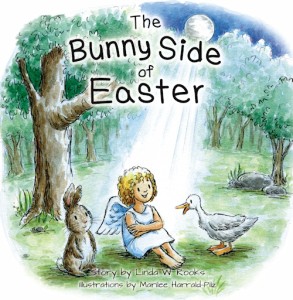
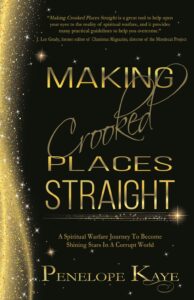 WE LIVE IN a challenging world. Temptations surround us. We struggle with what is right and what is wrong. When things work out differently than what we wanted and expected, we’re confused and overwhelmed. Where does this chaos come from? In her book,
WE LIVE IN a challenging world. Temptations surround us. We struggle with what is right and what is wrong. When things work out differently than what we wanted and expected, we’re confused and overwhelmed. Where does this chaos come from? In her book, 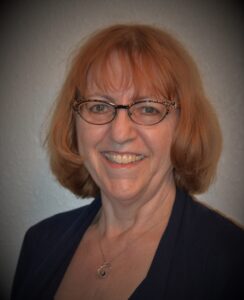
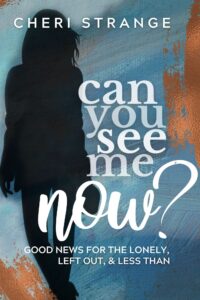 IF YOU EVER feel invisible, ignored, and overlooked as though you blend in with the wallpaper when you’re with a group of people, the loneliness you feel can be overwhelming. Author Cheri Strange knows this feeling herself and wants to help you rediscover your true value. Her new book,
IF YOU EVER feel invisible, ignored, and overlooked as though you blend in with the wallpaper when you’re with a group of people, the loneliness you feel can be overwhelming. Author Cheri Strange knows this feeling herself and wants to help you rediscover your true value. Her new book,  alone?
alone?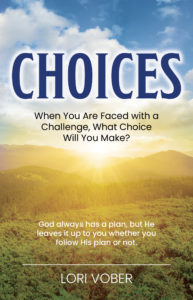 LIFE HAS A WAY of throwing surprises in our path, and some of them aren’t what we’d hoped for. Life can be challenging. How we face those challenges, however, can make all the difference in what our futures will look like. In Lori Vober’s new book,
LIFE HAS A WAY of throwing surprises in our path, and some of them aren’t what we’d hoped for. Life can be challenging. How we face those challenges, however, can make all the difference in what our futures will look like. In Lori Vober’s new book, 